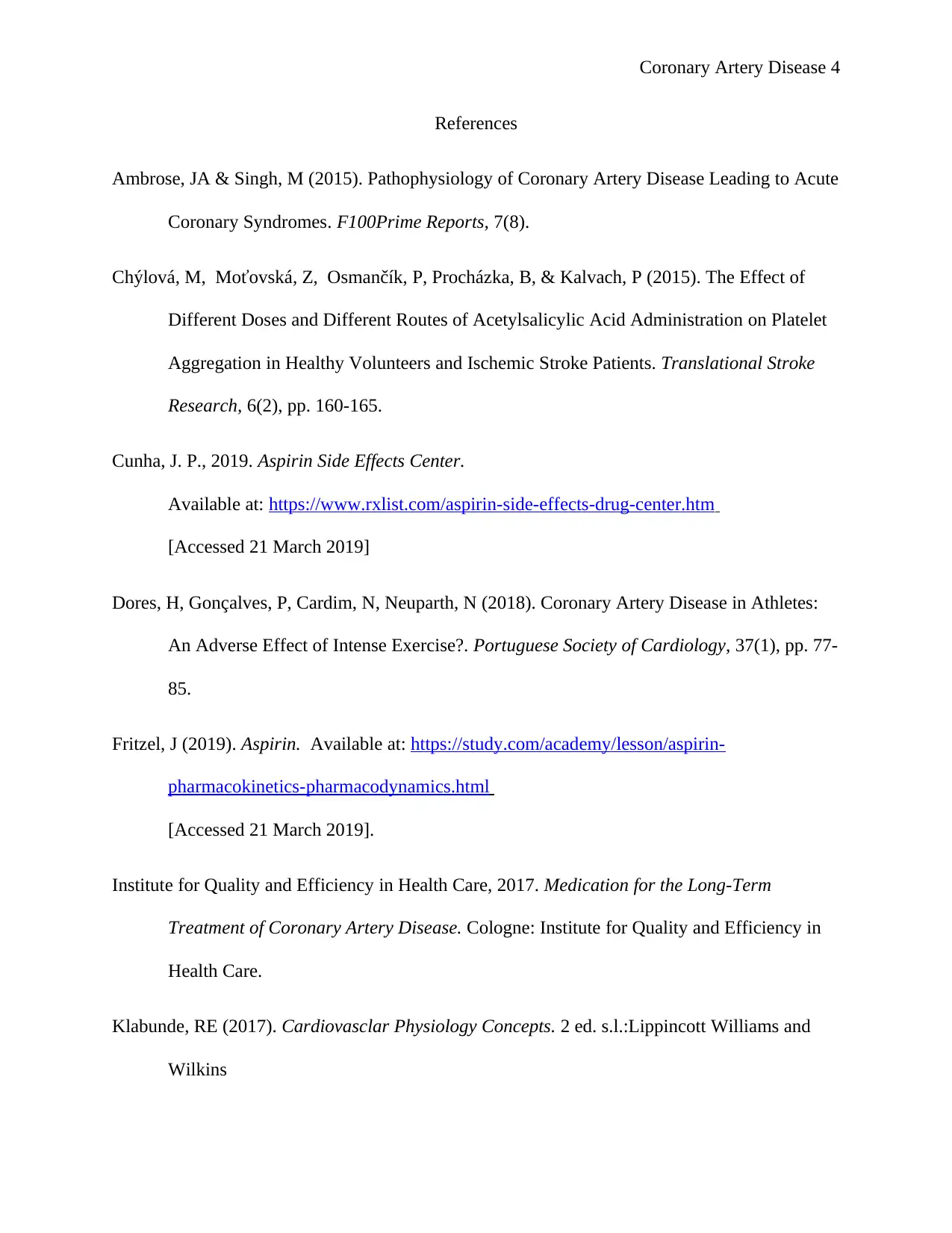CAD: Pathophysiology, Treatment Options and Clinical Implications
VerifiedAdded on 2023/04/08
|5
|562
|99
Report
AI Summary
This report provides an overview of coronary artery disease (CAD), starting with the importance of zinc and nitric oxide in maintaining homeostasis in coronary arteries. It summarizes that CAD begins with atherosclerosis, an inflammatory condition accelerated by factors such as high blood pressure, genetics, diabetes, and high cholesterol, leading to the thickening of artery walls. The report highlights acetylsalicylic acid (ASA), found in aspirin, as a primary medication, explaining its mechanism of action in inhibiting prostaglandin production, thus reducing inflammation and blood pressure. It details the pharmacokinetics of aspirin, including its absorption and distribution, while also noting potential side effects like gastrointestinal issues. The conclusion emphasizes that CAD is a neurohormonal imbalance that can be managed, referencing the importance of physical exercise in prevention, although athletes can still experience cardiac events. The report cites various sources to support its claims regarding pathophysiology, treatment, and clinical considerations for CAD.
1 out of 5






![[object Object]](/_next/static/media/star-bottom.7253800d.svg)